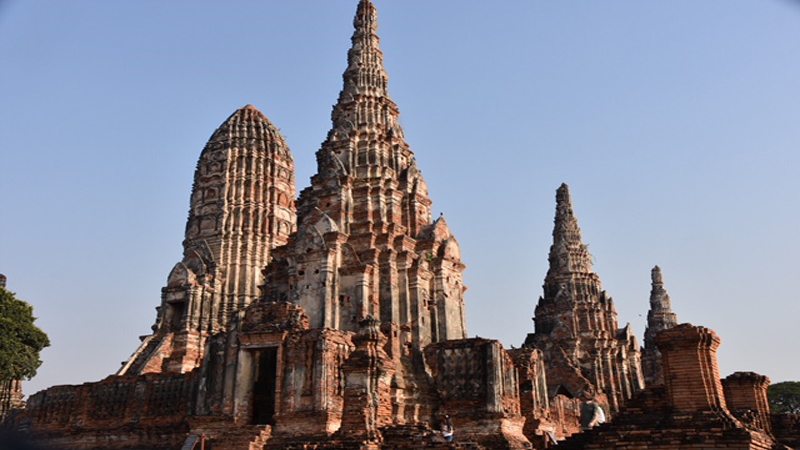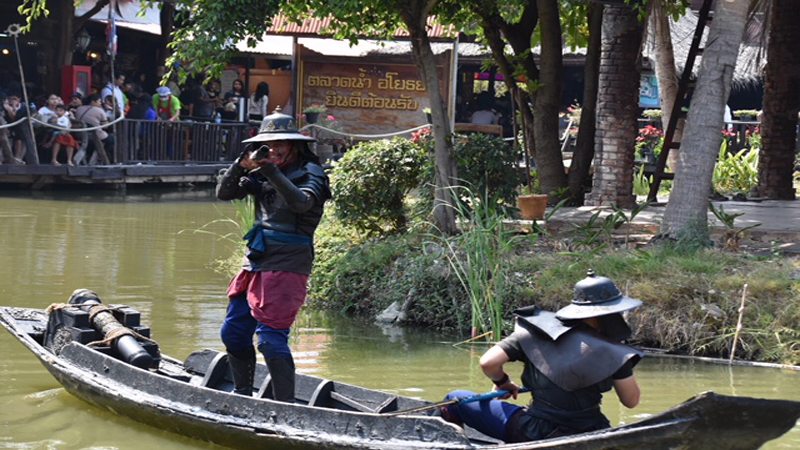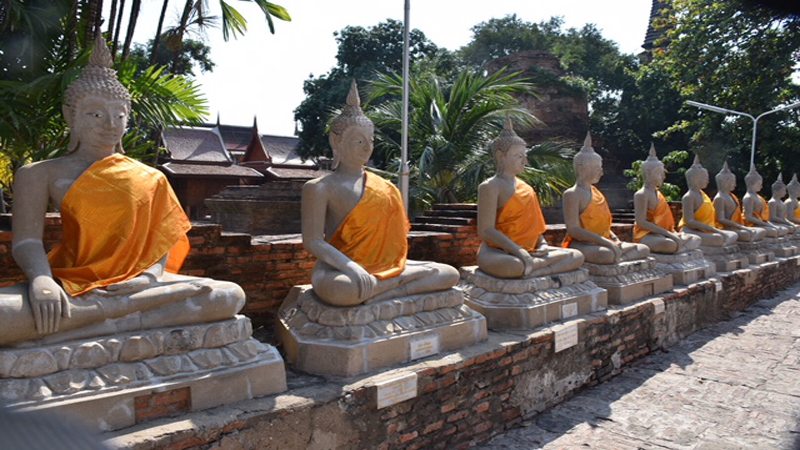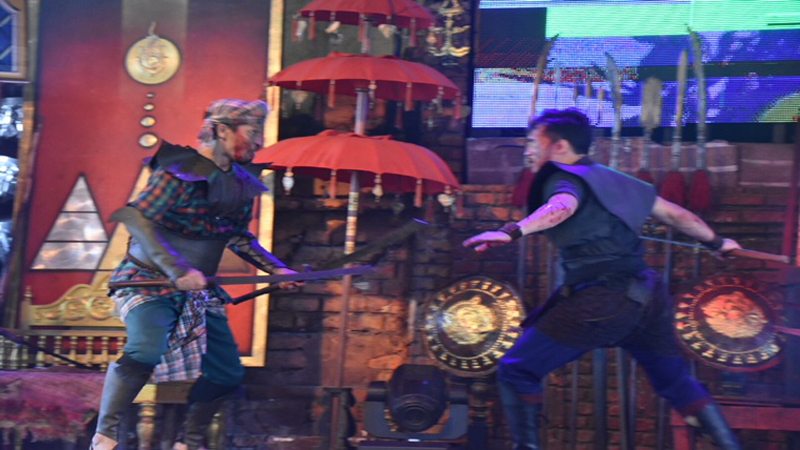 AsI did not even know such a place existed. The person filling an important gap in my knowledge of Thailand’s history was a guide that we had hired in Bangkok.
AsI did not even know such a place existed. The person filling an important gap in my knowledge of Thailand’s history was a guide that we had hired in Bangkok.
She told me that Ayutthaya had been the ancient capital of Thailand until 1767, when it was sacked by the Burmese. Until then, I had not known that the Burmese had ever been an imperial power to reckon with.
In the ancient capital, we got to see a number of temples and the devastation that had been visited upon them by the Burmese army. Each temple housed statues of the revered Lord Buddha. But the heads of several of the Buddhas had been crudely cut off.
I found the beheadings hard to believe since the Burmese were Buddhists themselves. But the reality was in front of my eyes. In one of the temples, a tree had grown around the head of the Buddha.

In Ayutthaya, the seating platform seemed a lot smaller. It could only accommodate two passengers. Perhaps, Thai elephants were smaller than Pakistani elephants. But the platform was also quite rickety. The one innovation was an umbrella, which provided much needed shade from the blistering sunlight.
As the mammoth beast began to move, I only hoped the platform would stay in one place. If it fell, I guessed we would fall by about 12 feet and at the least, break a leg.
As it turned out, along the way, we went under an electrical power line and the top part of the umbrella snagged against it. Now, I thought either the line would snap and we would be electrocuted, or the platform will topple, with somewhat less serious but still very harmful consequences. The mahout decided to back up and go around the line, preventing any of the two scenarios from coming to pass.

It was quite a long ride. We saw some interesting sights on the way. At one place, several elephants were bathing themselves under a water fountain. And as the pachyderm turned around, it raised its trunk, expecting a trip.
It was not clear where to give the money, but the obvious spot seemed to be the end of the trunk, at whose end there appeared to be two nostrils. I was reluctant to touch those, and while passing the money to the elephant, it fell short and dropped to the ground. The adjacent elephant conveniently picked the cash up from the ground and handed it back to our mahout.
We went to a large tent to watch a live re-enactment of the Burmese invasion of Ayutthaya. There were, at least, 200 people seated in the tent. The invasion was very well staged with actors in period costumes, tons of verbal bluster between the Thai and Burmese combatants, occasional gunshots and flashes of screaming victims, including kids and yelling invaders
After the ride, we were given a chance to pose with the elephant, but my wife declined. I decided to give it a try. Of course, a tip was expected, but I thought it would be worth the picture. I stood next to the animal we had ridden, and my wife got ready to take our picture.
All I know is that the owner said something to the elephant, and the next thing I knew was that the elephant had rolled its trunk around me (it was hairy and a bit coarse). Within seconds, I was being lifted bodily upwards into the air. That was something that had never happened to me anywhere before, least of all in a foreign country and without my permission.

After the surprising event, we went to have lunch at a nearby restaurant where they served dishes made with halal meat. The food was delicious but a bit too spicy for me; it was at the opposite end from a range of Persian and Turkish dishes, which have almost no fire in them, at least for Pakistani palates.
After lunch, we went on a meandering houseboat ride through a market. The shops were selling anything that a tourist might desire. But we resisted the temptation and did not buy anything.
After the ride, we want to a large tent to watch a live re-enactment of the Burmese invasion of Ayutthaya. There were, at least, 200 people seated in the tent. The invasion was very well staged with actors in period costumes, tons of verbal bluster between the Thai and Burmese combatants, occasional gunshots and flashes of screaming victims, including kids and yelling invaders.
Our last stop that day was a drive to the legendary Bridge on the River Kawai. We had seen the eponymous movie decades ago. It was one of those epics that you can never forget. I was hoping the bridge would live up to its expectations.
It lay along the road to Burma. The bridge had been built by the Japanese during the Second World War to provide a railroad link to Burma, from which they hoped to attack and conquer British India.
The first thing we saw was the cemetery and the adjacent museum. In front of us lay rows and rows of headstones, grouped by the nationalities of the deceased soldiers. I read some of the headstones and saw the ages of the dead. Many had died in their youth. Others had plaintive goodbyes written on them by spouses, siblings or children. There was plenty of emotion captured in stone to wet your eyes.
Then we went to the bridge. It was beautiful and grand, just as in the movie, spanning a mighty river. We walked on it, along with several others.
There was no sign of a train, even though the tracks were still there. There were no soldiers, no gunfire, just the peaceful flow of water underneath.
As we approached the end of the bridge, we heard the theme music of the film. A man was playing it on his flute. As we got closer to him, he put the flute aside and asked us where we were from. On hearing our answer, he began to play the Tony Bennett song, “I left my heart in San Francisco.” It was simply amazing.
We turned around and walked back to the car. We were now headed back to Bangkok. It was going to be a long drive. As we approached the city limits, the traffic intensified.
Finally, we arrived at the hotel. It had been a long day, but we had taken in some important milestones in Thai history. The influence of the Lord Buddha in everyday Thai life had become apparent. But I was left wondering why he had so few followers in his native India as compared to so many in South-East Asia and much of East Asia.

Published in Daily Times, January 21st 2018.
